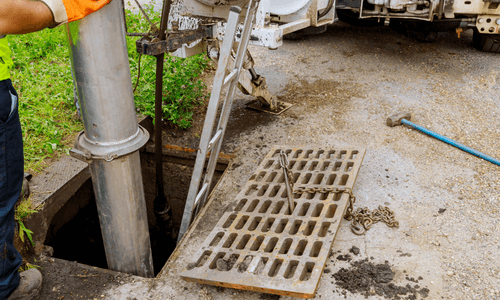
7 Signs of Sewage Backup in Your Home
Recognizing the signs of sewage backup in your home is crucial for preventing extensive damage and health hazards. Local Plumber understands the importance of early detection and offers a detailed tutorial on seven common signs of sewage backup. With step-by-step instructions and expert tips, Local Plumber’s tutorial ensures that homeowners in Tampa, FL, and the surrounding areas can identify sewage backup issues promptly and take appropriate action to mitigate the problem.Introduction:
Sewage backup occurs when wastewater from drains and toilets cannot flow freely through the sewer line and backs up into your home. This can result in foul odors, water damage, and health risks if left untreated. By recognizing the signs of sewage backup early on, homeowners can take proactive measures to address the issue and prevent further damage. Here are seven common signs of sewage backup to watch out for:1. Foul Odors:
Foul odors signaling sewage backup are one of the most recognizable and distressing signs of plumbing issues within a home. These odors, often described as “sewer-like” or “rotten egg” smells, are caused by the presence of bacteria, decomposing organic matter, and gases such as hydrogen sulfide emanating from sewage and wastewater.Identifying foul odors associated with sewage backup is relatively straightforward. Homeowners may notice a strong, unpleasant smell emanating from drains, toilets, or other plumbing fixtures in their home. This odor is often persistent and may intensify when using water or plumbing fixtures. Additionally, the smell may be localized to specific areas of the home, such as bathrooms, kitchens, or basements, where sewage backup is more likely to occur.
Aside from being unpleasant, foul odors signaling sewage backup can pose health risks to occupants of the affected property. Exposure to sewage-related odors and gases can irritate the respiratory system, trigger allergic reactions, and spread harmful pathogens, increasing the risk of infectious diseases.
Addressing foul odors associated with sewage backup requires prompt action to identify and address underlying plumbing issues. Homeowners should inspect drains, toilets, and plumbing fixtures for signs of blockages or damage and take steps to clean and disinfect affected areas thoroughly. Preventive measures, such as regular plumbing maintenance and proper waste disposal practices, can help minimize the risk of sewage backup and associated foul odors in the future.
In summary, foul odors signaling sewage backup are a clear indication of plumbing issues within a home and should be addressed promptly to prevent further damage and health risks.
2. Slow Draining Fixtures:
Slow draining fixtures can often be a subtle yet significant indication of potential sewage backup within a home’s plumbing system. When wastewater fails to drain properly from sinks, showers, or toilets, it suggests a blockage or obstruction in the sewer line, which can lead to sewage backup if left unresolved.Identifying slow draining fixtures is relatively straightforward. Homeowners may notice that water takes longer than usual to drain from sinks, showers, or tubs, or they may observe a gradual decrease in drainage efficiency over time. In severe cases, water may even pool around drains or fixtures, indicating a significant obstruction in the plumbing system.
Slow draining fixtures are particularly concerning because they can escalate into more severe sewage backup issues if not addressed promptly. As blockages worsen, water flow may become increasingly restricted, leading to complete blockages and potential overflows of sewage into the home.
Addressing slow draining fixtures signaling sewage backup requires proactive intervention to identify and remove blockages within the plumbing system. Homeowners should start by inspecting drains, traps, and pipes for signs of debris, grease buildup, or other obstructions. Using tools such as drain snakes or plungers may help dislodge minor blockages, while more severe obstructions may require professional assistance from a plumber.
In addition to clearing blockages, homeowners should also take preventive measures to minimize the risk of future sewage backup incidents. This may include avoiding flushing inappropriate materials down drains, such as grease, food scraps, or non-flushable items, and scheduling regular maintenance checks for the plumbing system to identify and address potential issues before they escalate.
3. Gurgling Noises:
Gurgling noises emanating from drains, toilets, or pipes are indicative of potential sewage backup issues within a home’s plumbing system. These noises occur when air becomes trapped in the plumbing system due to blockages or obstructions in the sewer line. As wastewater attempts to flow past the blockage, it creates air pockets that produce gurgling sounds.Identifying gurgling noises as a sign of sewage backup is relatively straightforward. Homeowners may notice these sounds when using plumbing fixtures such as sinks, showers, or toilets, particularly when water is draining or being flushed. The gurgling noises may be intermittent or continuous, depending on the severity of the blockage and the level of water flow.
Addressing gurgling noises signaling sewage backup requires proactive intervention to identify and remove blockages within the plumbing system. Homeowners should inspect drains, traps, and pipes for signs of debris, grease buildup, or other obstructions. Using tools such as drain snakes or plungers may help dislodge minor blockages, while more severe obstructions may require professional assistance from a plumber. Taking prompt action to address gurgling noises can prevent further damage and sewage backup incidents within the home.
4. Water Backing Up:
Water backing up from drains or toilets is a clear indication of sewage backup within a home’s plumbing system. This phenomenon occurs when wastewater is unable to flow freely through the sewer line and instead reverses its course, causing water to overflow from plumbing fixtures.Identifying water backing up as a sign of sewage backup is relatively straightforward. Homeowners may observe water pooling around floor drains, toilets overflowing when flushed, or water backing up into sinks or tubs when using nearby fixtures. In severe cases, water may even flood basements or crawl spaces, causing extensive damage to the property.
Addressing water backing up signaling sewage backup requires immediate action to prevent further damage and health hazards. Homeowners should first attempt to clear any visible blockages in drains or toilets using plungers or drain snakes. If the issue persists or worsens, professional assistance from a plumber may be necessary to identify and address the underlying cause of the sewage backup.
Ignoring water backing up can lead to extensive water damage, mold growth, and contamination of the home’s interior. Therefore, prompt intervention is essential to mitigate the effects of sewage backup and restore the proper functioning of the plumbing system.
5. Multiple Drain Clogs:
Experiencing simultaneous clogs in multiple drains throughout a home is a clear indication of potential sewage backup. When the main sewer line becomes obstructed, it affects all connected plumbing fixtures, causing them to drain slowly or not at all.Homeowners may notice clogs occurring in different areas of the home, such as bathrooms, kitchens, or laundry rooms. Addressing multiple drain clogs promptly is crucial to prevent further sewage backup issues and potential damage to the property. Professional assistance from a plumber may be necessary to identify and resolve the underlying cause of the blockages.
6. Sewage Smells Outside:
Detecting sewage smells outside the home is a concerning sign of potential sewage backup in the plumbing system. These odors, similar to those found indoors, often indicate a leak, blockage, or malfunction in the sewer line or septic system. Homeowners may notice sewage-like smells lingering around their yard, particularly near sewer cleanout access points, septic tank vents, or areas with visible sewage seepage.Identifying sewage smells outside requires careful observation of the property’s exterior and drainage areas. If foul odors are present, homeowners should avoid ignoring them, as they may indicate a serious issue with the sewer infrastructure. Contacting a professional plumber to conduct a thorough inspection of the sewer line and septic system is essential for identifying and addressing any underlying problems.
Ignoring sewage smells outside the home can lead to further sewage backup, property damage, and environmental contamination. Prompt intervention is necessary to prevent these issues from escalating and ensure the proper functioning of the plumbing system.
7. Sewage in Basement or Crawl Space:
Discovering sewage in the basement or crawl space of a home is a distressing and unmistakable sign of severe sewage backup. When wastewater overflows from drains or toilets, it can flood these areas, causing extensive damage and posing serious health risks to occupants. Sewage in basements or crawl spaces may contain harmful pathogens, bacteria, and contaminants, making it unsafe for human exposure.Identifying sewage in these areas requires immediate action to mitigate the damage and health hazards. Homeowners should avoid direct contact with sewage-contaminated water and evacuate the affected area if necessary. It’s crucial to address the sewage backup promptly to prevent further contamination and damage to the property’s structure and belongings.
Professional assistance from a plumber or restoration specialist is often necessary to safely remove sewage, disinfect the area, and restore the affected space to a clean and habitable condition. Ignoring sewage in basements or crawl spaces can lead to mold growth, structural deterioration, and long-term health consequences for occupants. Therefore, homeowners should prioritize addressing sewage backup issues promptly to protect their property and well-being.
To Conclude..
Recognizing the signs of sewage backup in your home is essential for protecting your property and the health of your family. By being aware of these seven common signs, homeowners in Tampa, FL, and the surrounding areas can identify sewage backup issues early on and take prompt action to address them. If you suspect sewage backup in your home, it’s crucial to contact a professional plumber immediately to assess the situation and implement appropriate solutions. With timely intervention, you can minimize damage and restore your home’s plumbing system to proper working order.
Contact us today for any plumbing issues and we shall be at your service. Email us at services@local-plumber.com or call us at 813-776-7667 (POOP).





Leave a comment